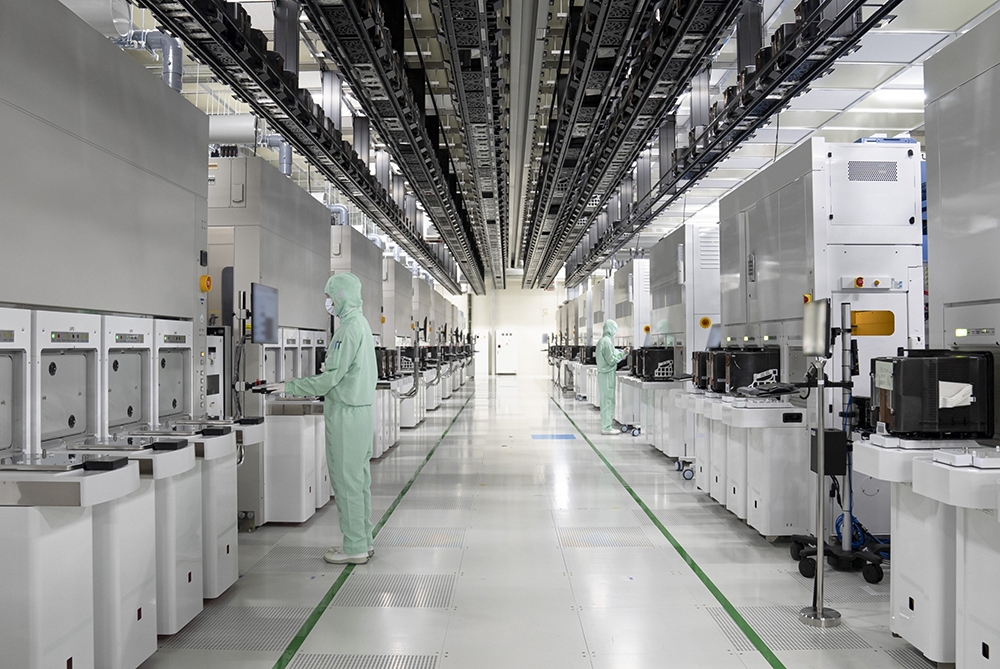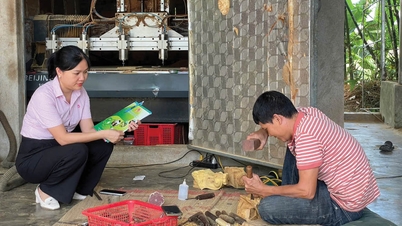This will be the first wafer manufacturing plant in Vietnam, marking an important breakthrough in the country's semiconductor industry development strategy. The project was approved in March 2025 with a plan to complete before 2030.
The plant will specialize in manufacturing chips for defense, artificial intelligence (AI) and high-tech applications. The government has pledged financial support of up to 30% of the total investment (up to VND10 trillion) along with tax incentives. A special steering committee headed by Prime Minister Pham Minh Chinh will oversee and coordinate the project.
Over the years, our country has made many efforts to join the semiconductor industry. In 2023, Vietnam entered into negotiations with many large chip companies from the US, South Korea and other regions to establish a position in the chip manufacturing industry.
Mr. Vu Tu Thanh, Director of the US-ASEAN Business Council Office in Vietnam, said that Vietnam has discussed with six US chip manufacturing companies, but the names of these companies have not been disclosed because negotiations are still ongoing. An unnamed official also said that the discussions involved US company GlobalFoundries and Taiwan's Powerchip Semiconductor Manufacturing Corp (PSMC) as potential investors.
Strategy to turn Vietnam into a global semiconductor center
In September 2024, Prime Minister Pham Minh Chinh signed Decision No. 1018/QD-TTg, announcing the Strategy for the Development of Vietnam's Semiconductor Industry with a Vision to 2030-2050. This strategy clearly outlines a 3-phase roadmap to turn our country into a global semiconductor hub.
In Phase 1 (2024-2030), Vietnam will take advantage of its geographical and human resources to attract foreign investment, with the goal of establishing at least 100 chip design companies, one semiconductor manufacturing plant, and 10 packaging and testing facilities. Phase 2 (2030-2040) will focus on expanding at least 200 design companies, two chip manufacturing plants, and 15 packaging and testing facilities. Phase 3 (2040-2050) aims to make our country one of the world's leading countries in semiconductors and electronics.
To achieve these goals, the government has offered a number of incentives, including tax breaks and land subsidies. However, this ambition also faces many challenges, such as the cost of building a wafer manufacturing plant that could reach up to $50 billion, far exceeding the current budget ($500 million).
Before the construction of the first wafer factory, Vietnam had already established its position in the intermediate and downstream semiconductor sector with 174 foreign semiconductor-related projects, with a total investment of nearly 11.6 billion USD. Intel, Amkor Technology and Hana Micron Vina are major companies operating in Vietnam, creating a strong packaging and testing center.
Vietnam is also actively developing AI and compound semiconductors. NVIDIA has signed a cooperation agreement with the government to establish an AI R&D center and data center here. Domestic companies such as Viettel are also involved in chip design and manufacturing.
To bridge the technology gap, Vietnam has launched a Semiconductor Talent Development Program, with the goal of training 50,000 professionals by 2030. The government also offers tax incentives and R&D subsidies to attract foreign investment.
Despite the challenges, the restructuring of global supply chains and the explosion of AI chips present a unique opportunity for Vietnam. By focusing on chips for automotive and telecommunications applications, Vietnam is on track to complete its first wafer factory by 2030 to cement its position in the global semiconductor landscape.
Wafers are silicon wafers (often referred to as wafers) that are the core physical component in the manufacture of semiconductor chips. They serve as the containers for the components that make up the finished chip. Wafer manufacturing is the first step in the chip manufacturing process.




![[Photo] Vietnamese and Hungarian leaders attend the opening of the exhibition by photographer Bozoky Dezso](https://vphoto.vietnam.vn/thumb/1200x675/vietnam/resource/IMAGE/2025/5/29/94d8ceca5db14af3bf31285551ae4bb3)



![[Photo] Prime Minister Pham Minh Chinh meets with Hungarian President Sulyok Tamas](https://vphoto.vietnam.vn/thumb/1200x675/vietnam/resource/IMAGE/2025/5/29/dbcaa73e92ea4448a03fe1d0de6d68e8)




















![[Photo] Prime Minister Pham Minh Chinh receives a bipartisan delegation of US House of Representatives](https://vphoto.vietnam.vn/thumb/1200x675/vietnam/resource/IMAGE/2025/5/28/468e61546b664d3f98dc75f6a3c2c880)






























































Comment (0)